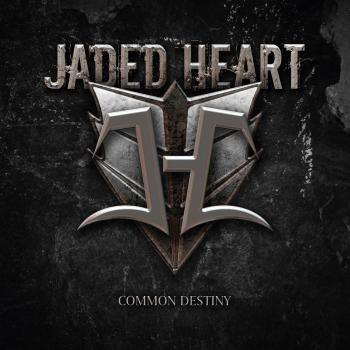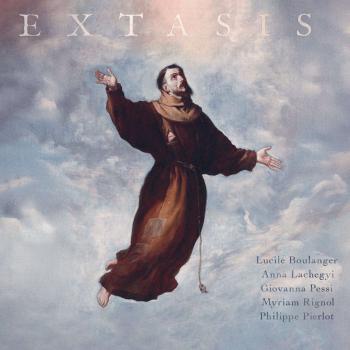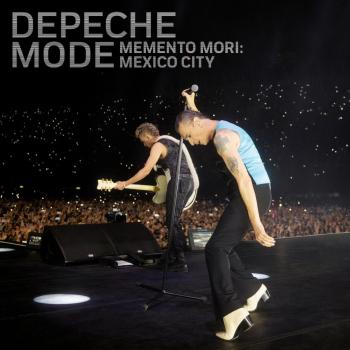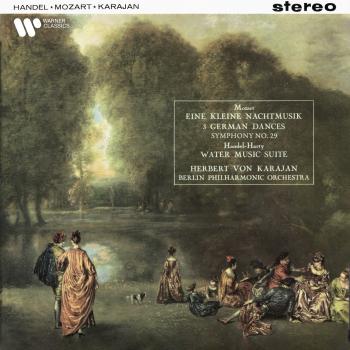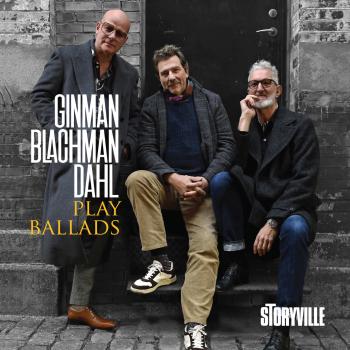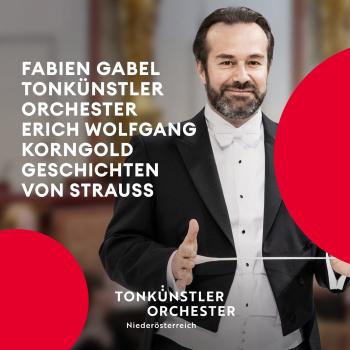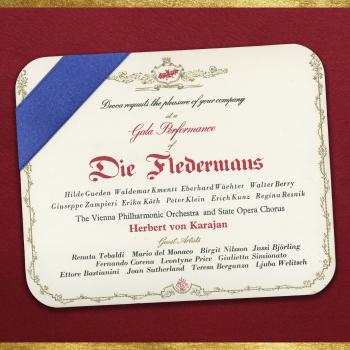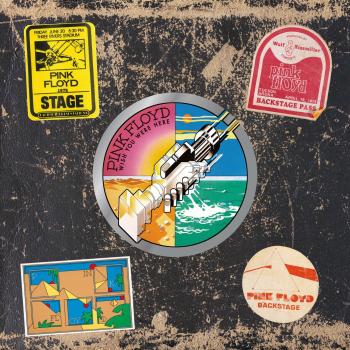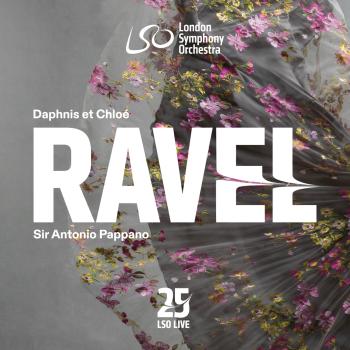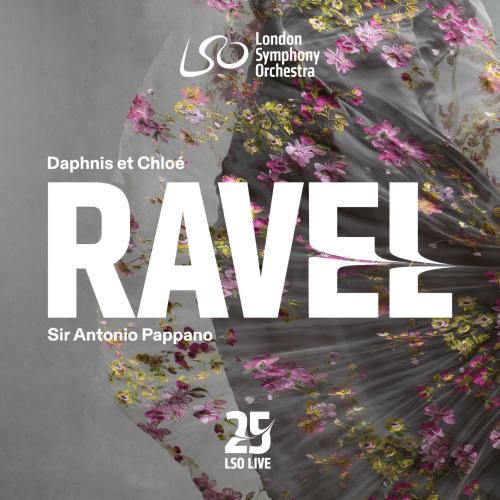
Ravel: Daphnis et Chloé London Symphony Orchestra & Sir Antonio Pappano
Album info
Album-Release:
2025
HRA-Release:
14.02.2025
Label: LSO Live
Genre: Classical
Subgenre: Orchestral
Artist: London Symphony Orchestra & Sir Antonio Pappano
Composer: Maurice Ravel (1875-1937)
Album including Album cover Booklet (PDF)
- Maurice Ravel (1875 - 1937): Daphnis et Chloé, M. 57, Première partie:
- 1 Ravel: Daphnis et Chloé, M. 57, Première partie: I. Introduction et Danse religieuse 07:56
- 2 Ravel: Daphnis et Chloé, M. 57, Première partie: II. Les jeunes filles attirent Daphnis - Danse Générale 03:39
- 3 Ravel: Daphnis et Chloé, M. 57, Première partie: III. Danse grotesque de Dorcon 01:47
- 4 Ravel: Daphnis et Chloé, M. 57, Première partie: IV. Danse légère et gracieuse de Daphnis - Lyceion danse - Les pirates 07:44
- 5 Ravel: Daphnis et Chloé, M. 57, Première partie: V. Une lumière irréelle enveloppe le paysage - Danse lente et mystérieuse - Daphnis se prosterne suppliant 04:48
- 6 Ravel: Daphnis et Chloé, M. 57, Deuxième partie: VI. Voix, très lointaines - Animé et très rude (Danse guerrière) - Bryaxis ordonne d'amener la captive 07:04
- 7 Ravel: Daphnis et Chloé, M. 57, Deuxième partie: VII. Danse suppliante de Chloé - Bryaxis veut l'entraîner - L'ombre de Pan apparaît 05:44
- 8 Ravel: Daphnis et Chloé, M. 57, Troisième partie: VIII. Lever du jour - Daphnis cherche pour Chloé et il rêve d'elle - Daphnis et Chloé miment l'aventure de Pan et de Syrinx 06:48
- 9 Ravel: Daphnis et Chloé, M. 57, Troisième partie: IX. Chloé réapparaît 04:42
- 10 Ravel: Daphnis et Chloé, M. 57, Troisième partie: X. Animé - Danse Générale - Danse de Daphnis et Chloé - Danse de Dorcon - Danse finale (Bacchanale) 04:15
Info for Ravel: Daphnis et Chloé
While living in Paris at the turn of the century, Maurice Ravel was commissioned to write a ballet by the impresario and founder of the Ballets Russes, Serge Diaghilev. The result was music of fluid, delicate beauty—a languid drama of danger and desire.
The plot of Daphnis et Chloé is adapted from a second-century Greek erotic pastoral, and tells the captivating story of love and longing between the humble goatherd Daphnis and shepherdess Chloé. When Chloé is abducted by pirates, Daphnis calls upon higher powers to aid his pursuit. These forces of nature are mirrored in the score through Ravel's characteristic lush orchestration and vivid melodies. Interjections from a wordless chorus—sung in this performance by award-winning British ensemble, Tenebrae—perfectly capture the celestial might of the God, Pan, as he comes to the lovers' rescue.
Known for its rich harmonic textures and expansive scoring, Daphnis et Chloé is one of Ravel's largest and most loved orchestral masterpieces. Join the London Symphony Orchestra and Chief Conductor, Sir Antonio Pappano, on this dreamlike musical journey through Greek mythology, where passion, nature and divinity intertwine.
Writing of his music for Daphnis et Chloé Ravel noted: ‘I sought to compose a broad musical fresco, less concerned with archaic fidelity than with loyalty to the Greece of my dreams, which in many ways resembled that imagined and depicted by the French artists of the latter part of the 18th century’. The subject came from a pastoral romance written by the Greek poet Longus around the third century AD. It was proposed to Ravel by the choreographer Mikhail Fokine, for a production by the Russian ballet company that Sergei Diaghilev was planning to bring to Paris.
The composition of this ‘symphonie choréographique’, as he called it, took Ravel more than two years, and it stands with Stravinsky’s three great pre-1914 ballets (The Firebird, Petrushka, The Rite of Spring) in signalling the far-reaching change in the function of music for theatre dance to an organic instead of mainly decorative element. The orchestra in this work is the largest for which Ravel wrote, and is probably larger than any other involved in a commissioned work for dance: besides the instrumental array with quadruple wind, strings to balance that, and a variety of percussion, it includes a wordless four-part chorus.
After differences of approach between Ravel and Fokine, and between them and the designer, Léon Bakst, were resolved, the first performance was given at the Théâtre du Châtelet, Paris, on 8 June 1912. As with the best of choreographic music, the quality of Ravel’s invention gave it enough self-sufficiency for concert performance. ‘The work’, he wrote, ‘is built symphonically on a very strict tonal plan by means of a few themes, the development of which ensures the work’s homogeneity’.
Tenebrae
London Symphony Orchestra
Sir Antonio Pappano, conductor
Please Note: we do not offer the 192 kHz version of this album, because there is no audible difference to the 96 kHz version!
Sir Antonio Pappano
is Music Director since 2005. With Sir Antonio Pappano in the role of Music Director since 2005, the stature of the Orchestra has enjoyed extraordinary success, building an international reputation for itself. With Pappano at the helm, the Orchestra has appeared at some of the major music festivals including the Proms in London, White Nights in St. Petersburg, Lucerne Festival, Salzburg Festival and has performed in some of the most world’s best-known venues, including the Philharmonie in Berlin, Musikverein and Konzerthaus in Vienna, Concertgebouw in Amsterdam, Royal Albert Hall in London, Salle Pleyel in Paris, La Scala in Milan, Suntory Hall in Tokyo, Semperoper in Dresden, Carnegie Hall in New York.
After long-term collaboration with some of the biggest international record labels who have produced recordings that have since become legendary, Santa Cecilia Orchestra records extensively for Warner Classic. The releases, under Pappano, include Puccini’s Madama Butterfly (with Angela Gheorghiu; the recording won a Brit Award), Verdi’s Requiem (Gramophone Award, BBC Music Magazine, Brit Classical), Rossini’s and Pergolesi’s Stabat Mater with Anna Netrebko (Gramophone Editors’ Choice Award), Rossini’s William Tell, Mahler’s Symphony no.6, Rossini’s Petite Messe Solennelle, Verdi’s Quattro pezzi sacri, Britten’s War Requiem, and a CD entitled Rossini Overtures. Recently recorded, Verdi’s Aida boasts a stellar cast (Anja Harteros, Jonas Kaufmann, Erwin Schrott) and has taken home numerous awards: Best Recording 2015 for The New York Times and for The Telegraph, Best opera 2015 – Apple Music, Choc Classica de l’année, Diapason D’or and Choix de France Musique, Record of the month for Gramophone, Preis der deutschen Schallplattenkritik. A CD also came out in 2015, with Tchaikovsky’s Piano Concerto no. 1 and Prokofiev’s Piano Concerto no. 2 performed by Beatrice Rana, Brahms’s Violin Concerto with Janine Jansen (Decca) and Schumann’s Piano Concerto performed by Jan Lisiecki (DGG).
Antonio Pappano and the Orchestra also recorded Nessun Dorma, The Puccini Album with tenor Jonas Kaufmann (Best Classical Music Recordings of 2015 for The New York Times), which made the world charts, Schumann’s Symphonies no. 2 and no. 4, Elgar’s Symphony no. 1 (ICA Classics), the cd “Anna Netrebko. Verismo” (DGG), Le Carnaval des Animaux with Martha Argerich, the Bernstein’s Symphonies (Warner Classics), Verdi’s Otello with Jonas Kaufmann (Sony Classical) and Tudor Queens with Diana Damrau (Warner Classics)
Booklet for Ravel: Daphnis et Chloé

